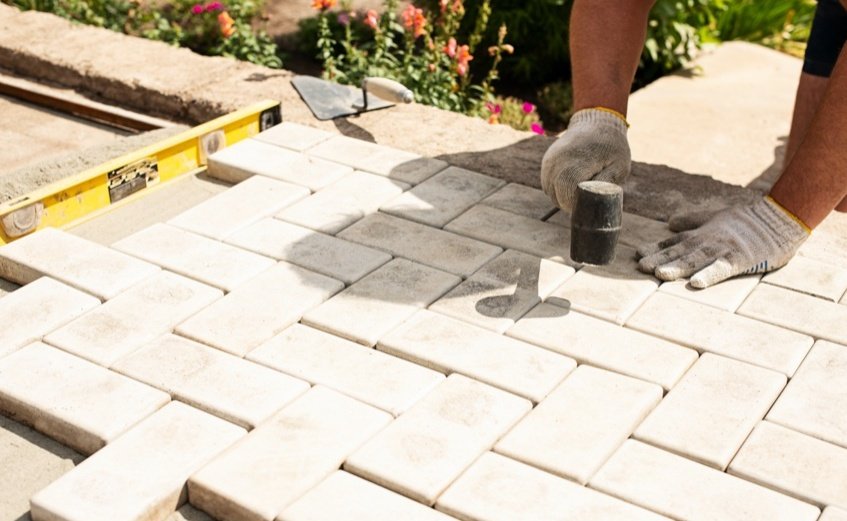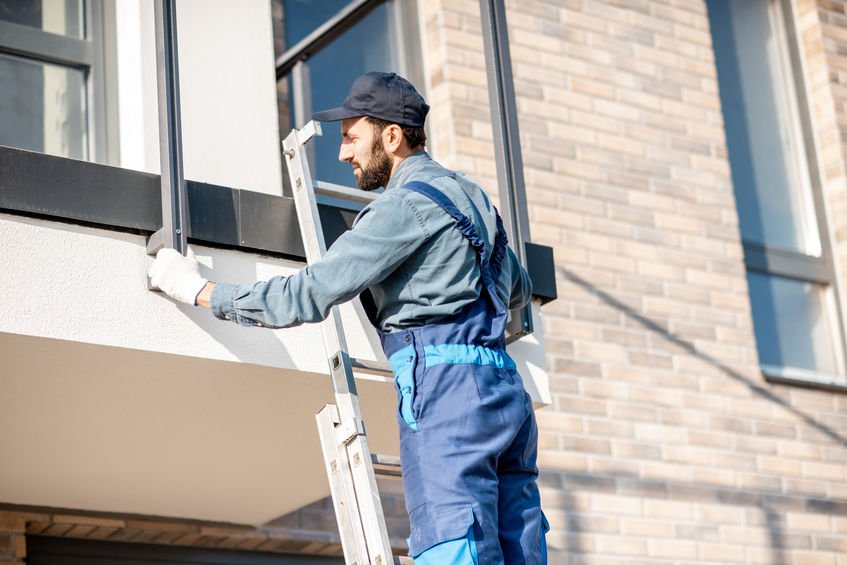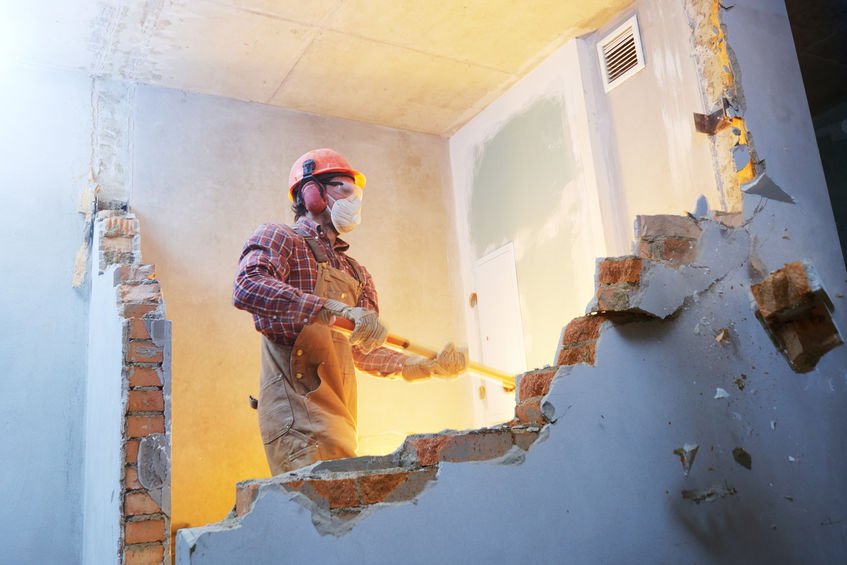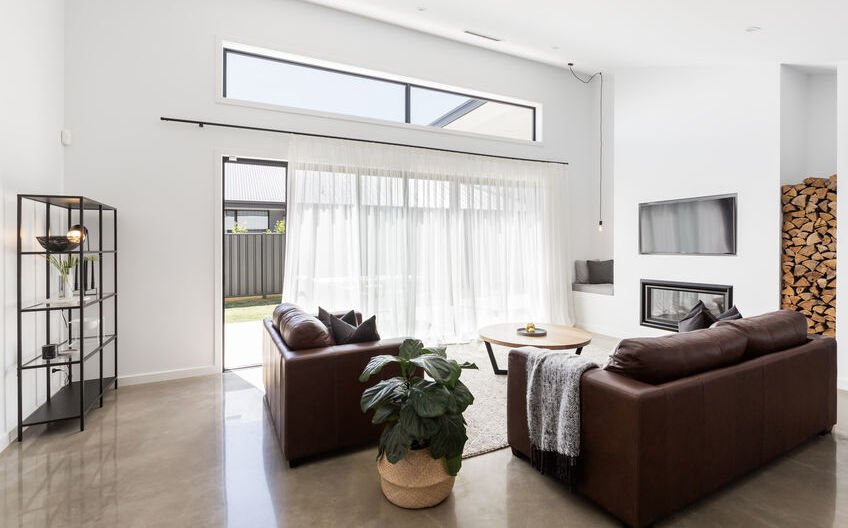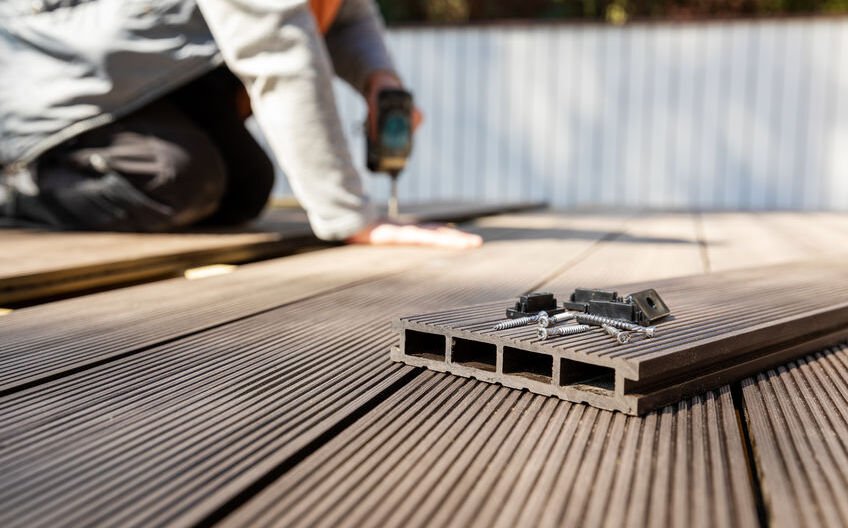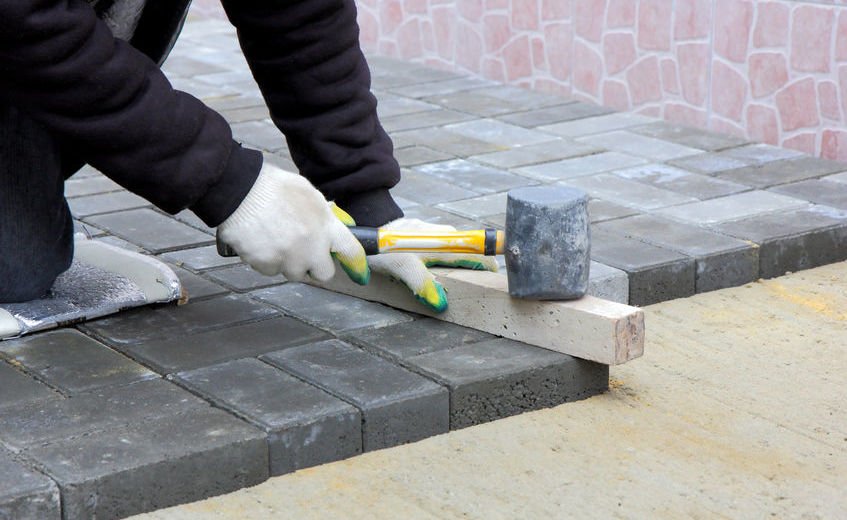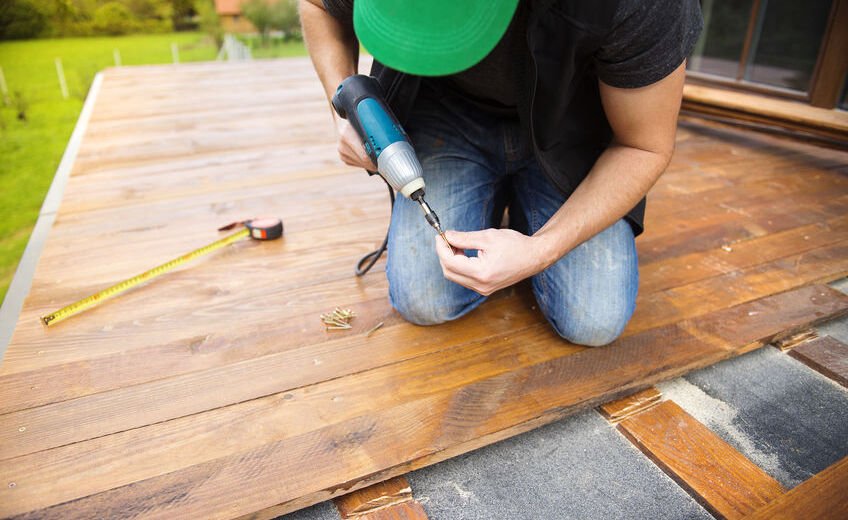
A wooden deck is not only visually appealing, but can also noticeably increase the quality of life and serve as a second living room, especially in summer. Read here how high the garden decking cost per square metre is in the UK and how to save money. Plus: Get free quotes!
What does garden decking cost in the UK?
Although the garden decking cost can vary considerably, on average it is around £100 – £200 per square metre in the UK. A decisive cost factor here is the choice of wood. The type of wood decking boards not only affects the material costs, but also the labour costs, because not all types of wood are equally easy to install.
ON AVERAGE: £100 – £200 PER M2
Particularly hard, dense types of wood such as oak or tropical woods such as bangkirai, ipe and teak are somewhat more time-consuming to cut and install. The price range for the different types of wood is enormous and can range from inexpensive pine planks from £30 per square metre to over £100 per square metre for bamboo and oak.
Popular types of wood are reddish-brown Douglas fir and light-brown larch (from £40 per m2 each) as well as hard and weather-resistant tropical woods such as Bangkirai, Ipe or Teak (from approx. £70 per m2).
WPC decking boards, which are a material mix of wood and plastic, are also becoming increasingly popular. They have a very similar look and feel to wood, combined with the durability and low maintenance of an artificial material. WPC decking boards start at an affordable £30 per square metre.
In addition, if necessary, costs for a stable foundation, the substructure and installation materials cost around £50 – £100 per m² for wooden decking. The decking installation costs vary depending on the type of timber, as the cutting process requires different amounts of work. While wood types such as larch or douglas fir can have low installation costs of around £30 – £40 per m², the costs for harder woods such as oak or bangkirai can be £45 – £70 per m².
For a better understanding of how the total costs for a wooden deck are made up, we have listed a cost example for a 15 m² wooden garden deck made of bangkirai decking boards. The figures listed here are only estimates, including VAT, and may of course vary.
Example: Garden decking cost – 15 m² – Bangkirai
1 m2 | 15 m2 | |
|---|---|---|
Load-bearing foundation | £35 | £525 |
Substructure | £25 | £375 |
Assembly material | £20 | £300 |
Bangkirai decking boards | £65 | £975 |
Laying incl. cutting | £40 | £600 |
Total cost | £185 | £2,775 |
Save money: Compare garden decking prices in your area!
There are now platforms that help you compare prices of contractors and find the best value for money in your area quickly and easily. A recommendable service is that of Bark. It only takes a few clicks to fill out the form. Whether you accept one of the offers or leave it at the price overview is up to you. The service is non-binding and free of charge.
What factors influence the cost of a wooden deck?
Although, as mentioned above, the choice of wood type plays a very decisive role, there are other factors that influence the final garden decking costs. The most important cost factors are:
- The choice of wood type (affects both material and labour costs)
- The size of the terrace
- The condition of the subsoil or foundation
- Does the floor need to be levelled beforehand?
- The type of substructure
- The hourly rate of the craftsmen (including regional price differences)
- Is there a flat rate for travel expenses?
- Travel costs or flat rate (if not included)
Which types of wood are particularly popular for decking?
In order to give a small overview of which types of wood are particularly popular and suitable for a wooden deck, we have compiled a small list and also go into the respective strengths and weaknesses as well as the costs.
» Pine, from £30 per sqm
Natural pine wood offers a unique feel and finish. Pine floors are popular because of their comparatively low price and rustic look. The problem with pine wood is that it is relatively soft and requires regular maintenance. However, this also makes it quicker and easier to work with than harder types of wood.
With proper treatment, however, pine can also be durable for a long time. Pine comes in a variety of colours and grains and is also available from sustainably sourced woods. Prices for pine start from around £30 per sqm.
» Larch and Douglas fir, from £40 per sqm
The woods larch (light brown) and Douglas fir (dark reddish brown) are among the most popular types of wood for decking. They have similar advantages and disadvantages as pine, but are more durable. Because they are also somewhat softer, they are comparatively easy and quick to cut and install, which has a positive effect on labour costs. The costs for larch and Douglas fir start at around £40 per sqm.
» Tropical woods such as Bangkirai, Teak, Ipe, Garapa and Massaranduba, from £65 per sqm
The use of tropical woods is very popular, despite the higher costs. Woods such as Bangkirai, Teak, Garapa, Massaranduba and Ipe have a unique look, are extremely hard and resist all kinds of weather thanks to their high density. Their essential oils protect them from mould and fungal attack.
They are also water repellent and any surface blemishes can be corrected by simple sanding. The excellent quality is reflected in the price of at least £65 per sqm, but tropical woods can be quite amortising due to their longevity.
» Bamboo, from £80 per sqm
Bamboo is even more expensive than Bangkirai and Co. Bamboo is popular because of its unique look and colour as well as its robust and resistant properties. Here, too, the labour costs for the installation will be a bit higher. Although bamboo is not a native wood, the fact that it grows back very quickly and easily makes it one of the more ecological options. The price per square metre for bamboo starts at around £80.
» Oak, from £80 per sqm
Even more ecological than bamboo with similar excellent properties is the domestic oak wood. Oak is clearly in the higher price segment, but you get a first-class and very durable material, which means that the investment can pay off over the years. In addition, the look of oak is noble and special. The costs for oak decking start at around £80 per square metre.
» WPC decking boards, from £30 per sqm
Technically speaking, WPC (Wood Plastic Composite) does not belong in this list, but due to its growing popularity, we did not want to deprive you of this material. WPC decking boards (or tiles) consist of a mixture of wood and plastic.
They are characterised by a high resistance to weathering and are an affordable and durable option. WPC visually imitates natural wood, but with the advantage that it does not require maintenance, is waterproof and moisture resistant. WPC is available in a variety of colours and finishes, and prices start at around £30 per sqm.
Garden decking: Cost of wood types per square metre
Wood type | Per m2 |
|---|---|
WPC (wood-plastic-mix) | from £30 |
Pine | from £30 |
Ash | from £35 |
Spruce | from £35 |
Larch | from £40 |
Douglas fir | from £40 |
Massaranduba | from £65 |
Garapa | from £65 |
Mukulungu | from £65 |
Bangkirai | from £65 |
Teak | from £70 |
Ipe | from £70 |
Oak | from £80 |
Bamboo | from £80 |
How much does the foundation and substructure cost?
As a rule, the costs for a load-bearing substructure including substructure and materials for installation are around £50 – £100 per square metre. The costs here usually vary slightly, depending on the materials used for the substructure / foundation, the hourly rate of the specialist company and the local conditions.
For example, if the area is on a slope or has a gradient, this must be taken into account or corrected beforehand. The foundation often consists of gravel or sand in combination with concrete paving and a substructure of wooden beams.
What are the advantages and disadvantages of wooden decking?
Wooden decking is particularly popular because of its warm, natural look and feel. Wooden tones harmonise particularly well with the green of the plants. In terms of durability, ease of maintenance and usually also cost, however, wooden decking cannot compete with concrete or stone patio slabs, for example. Those who choose wood usually do so because visual appearance and atmosphere have priority.
Can I reduce the decking costs by building the deck myself?
In principle, this is possible, but it requires a lot of know-how and craftsmanship. Especially with the foundation and the substructure, some mistakes can be made that are not only annoying but also extremely expensive if they have to be professionally corrected.
Furthermore, the different types of wood vary in their degree of difficulty. This is especially true for very hard woods like oak or tropical woods like bangkirai, ipe or teak. Due to the properties of the wood, cutting is more demanding.
How can you save money on wooden decking?
1. Investing in more expensive woods can be worthwhile
More of a tip to save in the long run, but the higher investment in harder, more durable woods such as oak, bamboo or Bangkirai can be well worth it. While pine, for example, only lasts about 10 years on average before it needs to be replaced, harder and denser types of wood can last for decades and also require less maintenance, which also reduces maintenance costs.
2. Carry out a free price comparison
On the one hand, the wooden decking costs vary depending on the wood used, on the other hand, the region and the hourly rate of the craftsmen also play a decisive role. For this reason, it is always worthwhile to carry out a free price comparison in advance. Simply click on the button below for free quotes.



